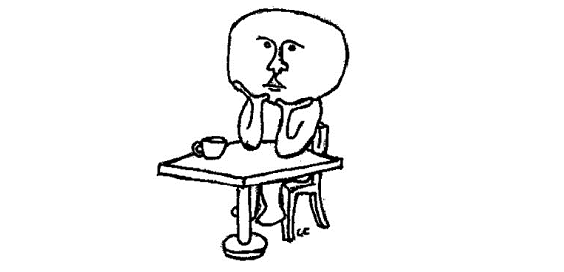It’s very likely that in elementary or middle school you completed a worksheet called “Survive the Wild” or “Desert Island.” (And you probably spelled it Dessert Island, which is altogether more appealing.) For the activity, you teacher asked you to find a partner and fill out a list of 15 things you would take with you if stranded on the open sea or on a deserted island.
You probably began by listing the essentials. Your fourth grade mind knew that things like water, food (or fishing equipment, if you were clever), a tent and a knife were necessary if you wanted to survive for more than a couple of days. But those things only took up about 10 spots. The remaining five items ventured into the realm of happiness and creature comforts. Would you take something slightly practical but unnecessary, like soap? Would you bring company, like a dog? Or would you bring entertainment, like a book or a sketchpad?
You argued with your partner, discussing the merits of a toothbrush versus swim goggles. Ultimately, you compromised and left class knowing that while it was an interesting experiment, it was very unlikely this would ever happen to you.
Flash forward 15 years, and log on to www.theburninghouse.com. It’s the twentysomethings version of that desert island scenario, and it could happen when you’re least expecting it.
The blog-style site asks a simple question. “If your house was burning, what would you take with you?” Respondents submit their answers in the form of a photo, most artfully taken, picturing the items they’d grab on the way out the door. A bulleted list, sometimes with explanations, accompanies the image.
I could browse this site forever. It’s in part (the smaller part, to be sure) because of the beautiful photos people take of things neatly organized and the precise descriptions they give. I love the artifacts of people’s lives, and my type-A brain is pleased with the arrangements.
But what I love more is the tension. These photos are a sociologist’s dream.
I can’t say it much better than the site’s ever-present sidebar: “It’s a conflict between what’s practical, valuable and sentimental.”
The practical: almost everyone grabs their passport. It’s probably the most important document you own. One girl took her inhaler. Most people bring some sort of backpack or suitcase — you know, to carry all their stuff in. Cell phones are also very popular. These are the strictly practical.
Almost everything else falls in multiple categories; it’s both sentimental and valuable or valuable and practical. A handful of folks bring some money — practical and valuable. Possibly the most common item is a camera. Practical because many of the submitters are artists who need the cameras to make their living, but cameras are often valuable as well. Many people take their computers or hard drives, which may seem practical, but then they’ll specify that it’s because of the photos or music on those machines; they don’t want to lose the memories.
But then there are the strictly sentimental things. The memories, the items we love. Almost everyone includes at least one piece of clothing. That’s totally replaceable, right? Your friends will give you something to wear until you’re back on your feet. There’s something about a favorite sweater, however, than can make everything feel all right. Maybe you just aren’t you without your signature hat or scarf.
Photos are strictly sentimental. So are stuffed animals and diaries and vinyl records and dishes. But these are the things we can’t really replace. Where else will you find a 23-year-old stuffed rabbit with a velvet nose that’s been worn away? How many Polaroids do you have of your dog hiding under the kitchen table? And the books — the majority bring at least one. Sure, you can buy another copy, but was it a gift from your best friend? Have you underlined and dog-eared it?
I’d add a fourth category: comfort items. They’re not practical or valuable or sentimental. I’ll admit, I don’t understand many of them. So many women bring makeup and perfume. Cigarettes are also common.
I’ll let you explore on your own now. The central question, one that might keep you going back every day, is what would I bring? We all have a lot of stuff. It’s comfortable and convenient. But if you really had to whittle it down, what would you toss in a backpack?
This could be an essay about keeping things simple, about prioritizing and clearing out the clutter. “Simplify, simplify, simplify,” urged Thoreau.
“I think one ‘simplify’ would have sufficed,” retorted Emerson. Too often we feign simplicity, no? Don’t fake it.
Do, however, decide what you’d take.



